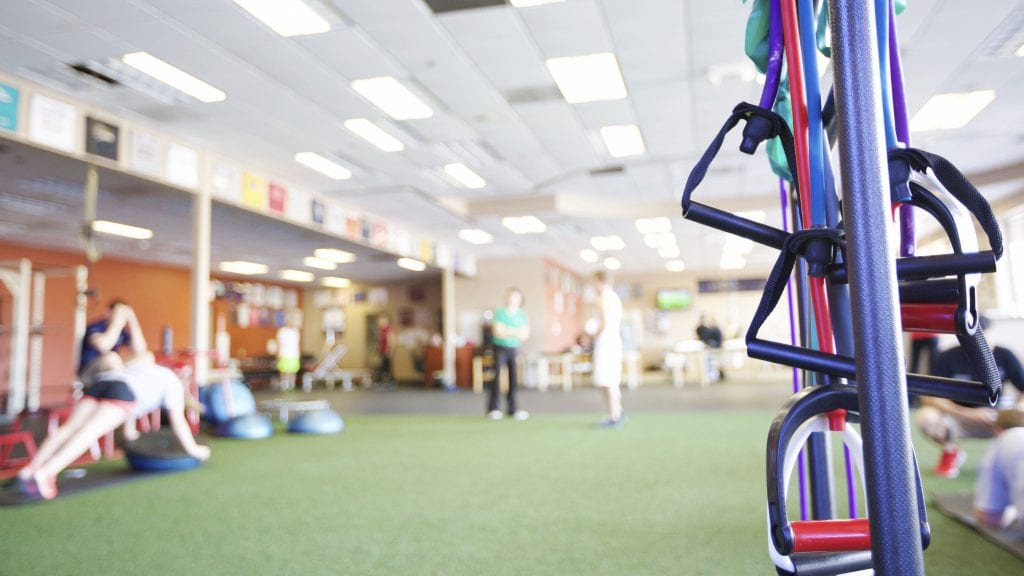As a physical therapist, I truly enjoy helping people recover from their injuries, getting them back to doing the things in life they love. However, I often only see people who are already injured and rarely get to utilize preventative measures.
My job utilizes a hands-on approach to medicine, using specific means to enhance bodily function. I use modalities to control pain and enhance function, and exercise to maximize the strength, flexibility, and mechanical aspects of a person’s body during specific activity. Physical therapy is a great means to return to proper health once an injury occurs. But what if you could work on aspects of your health prior to an injury?
The following is to provide you, the reader, with education and a small exercise regimen so you can understand and work on maintaining a healthy body.
Let’s start with the spine. The spine begins at the base of the skull and ends in the sacrum (tailbone). There are normal curvatures that your spine must utilize for proper function—the curvatures toward the front of the body in both the neck (cervical spine) and low back (lumbar spine). There is an opposite curvature in the mid back (thoracic spine) that must go away from the front of your body. Maintenance of these curvatures is crucial to spinal health, and limited or excessive amounts of these curvatures will affect the entire spine, not just local aspects.
For example, a postural abnormality can be visible in individuals with a drastic curvature in their thoracic spine. It may seem as if they walk facing the ground because of how the curvature has affected their neck and lower back. Although amplified for the example, this is the most common type of postural abnormality seen.
Many people don’t experience pain with this abnormality while others do. This type of posture reduces the curvature in the neck and lower back, placing a new and greater demand for support on the muscles of these regions. This posture also changes the mechanics of the spine, reducing absorption during motion.
Any progression towards this type of posture can affect all aspects of the spine including the muscles, ligaments, discs, and vertebra. The impact isn’t just local, any impairment of the spine can influence neighboring regions above and below. For this reason, spinal health is important for a person who wants to maintain good total body health.
Using cell phones and computers, reading, sitting, and even lying in bed with too many pillows can all predispose a person to this postural abnormality. You also have to take into account the time spent in many of these positions or doing these activities.
There are many factors to maintaining a healthy back that have to do with diet, level of activity, flexibility, mobility of the spine, neural tension, strength and stability, as well as genetic influences. It’s important to focus on flexibility, healthy activity, and strength to manage most aspects of spinal health.
To promote spine and back health focus on:
Abdominal strength
Most people correlate abdominal strength with sit-ups. However, there are four layers of abdominal muscles in the body and sit-ups focus mostly on one—rectus abdominis. The transverse abdominal muscle is key for lower back stability. When activated, this muscle provides the hips and back with stability that is crucial during bending, lifting, twisting, sitting and standing activity. Without activation of this muscle, it’s easy for the back to be overused for stability, resulting in back pain.
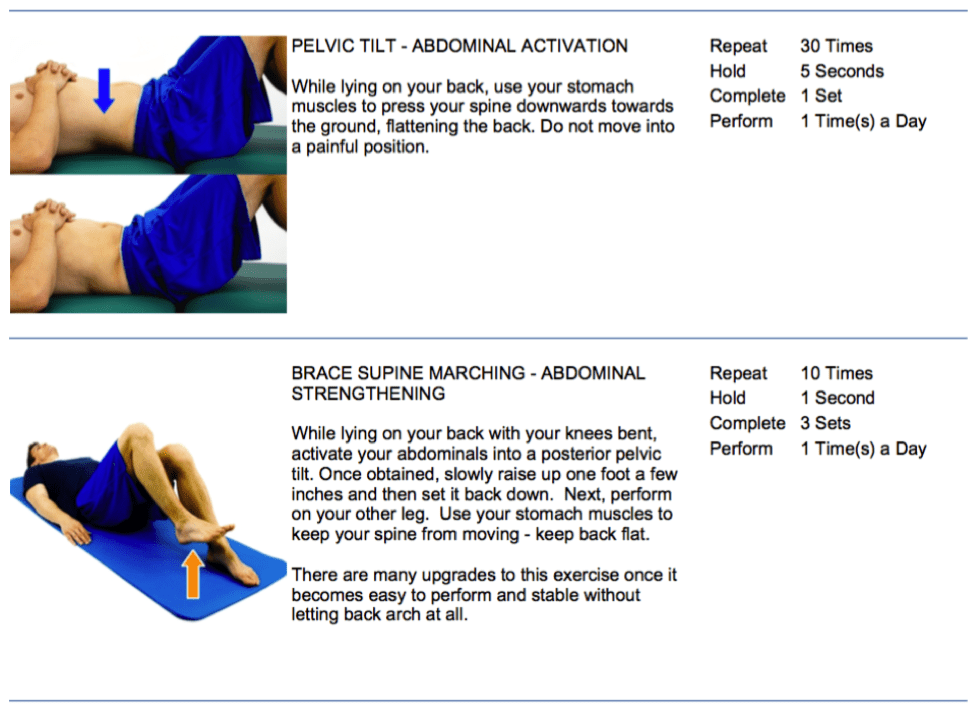
Leg Strength
For standing related activity leg strength is also crucial. Strong glute and hamstring muscles give support and reduce the demand on lower back musculature for stability. This is especially important when bending, squatting, and leaning forward. You must remember to always use your legs for any bending or leaning, otherwise you place your low back at risk for injury.

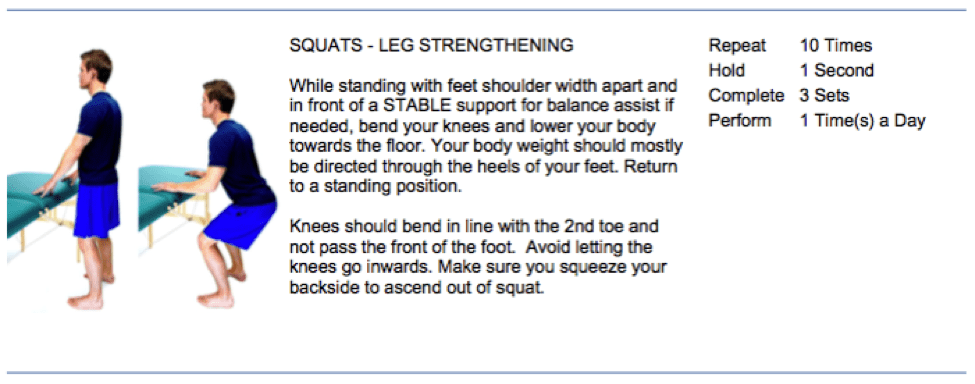
Postural Exercises
These exercises are used to prevent progression toward “bad” posture, most of them are for the upper back and neck. For maximum benefits, it’s important that correct postural positions are practiced not only during the exercise but in daily life as well.
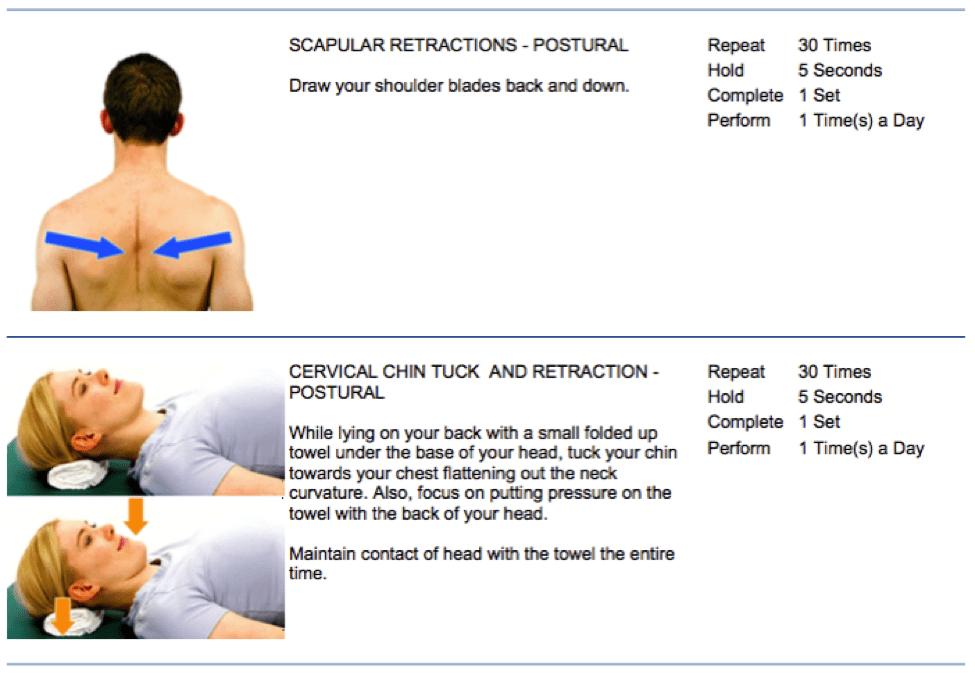
Mobility
These exercises promote mobility of the spine and associated joints. They’re used to stimulate movement and motion in your spine that you may not normally experience throughout the day (you know the old saying, “if you don’t use it, you lose it”). For those already experiencing back pain, these exercises may not help your condition. If there is ever any pain, do not engage in the exercise.

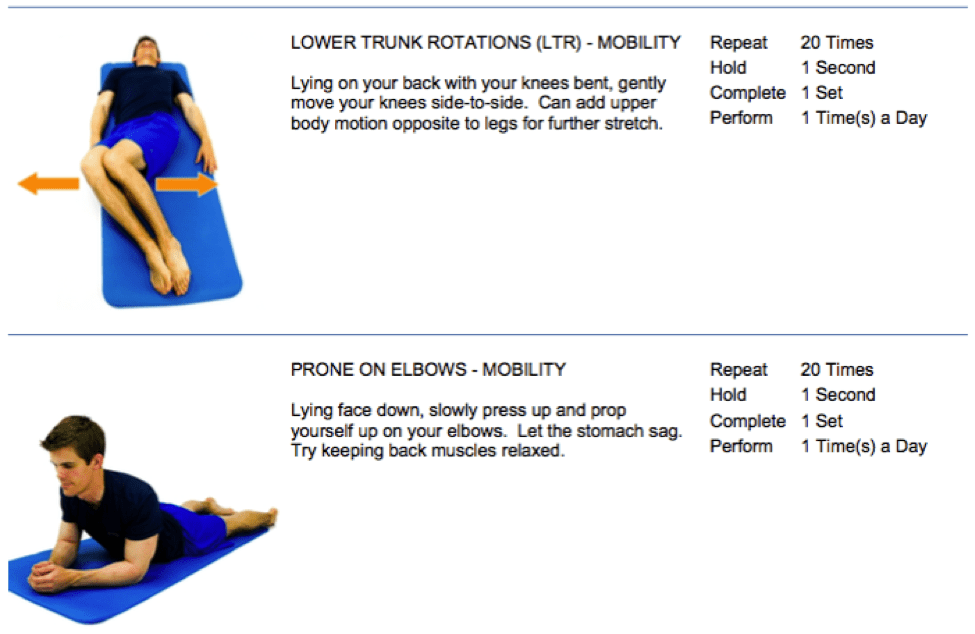
When performing these exercises, it’s important to focus on form (rather than speed) to achieve maximum results. These can be done anywhere and do not require equipment. Please note—these are meant to help you feel better, if there is ever any pain, stop the exercise immediately.
If you have any questions about this information or any of the exercises, please contact your local Foothills Sports Medicine Phoenix physical therapy location today!
Photos courtesy of HEP2go.
Preventing Spinal Injury Through Exercise
